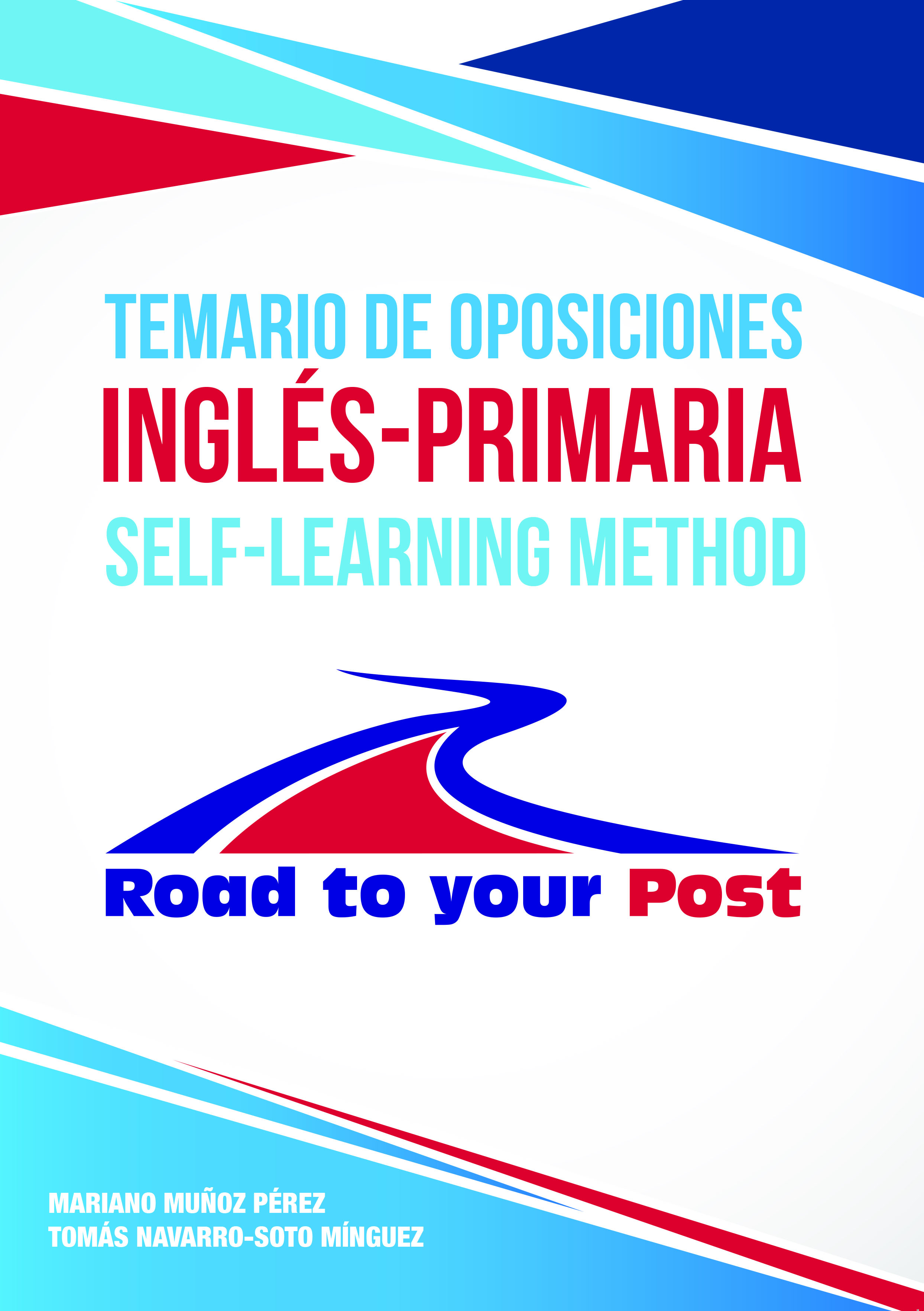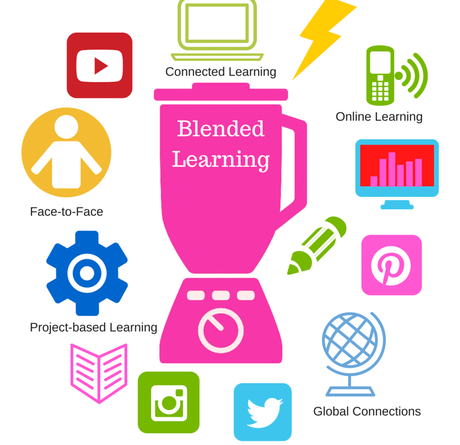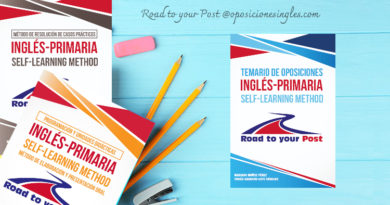Blended learning. Enhancing learning through technology.
Blended learning. Enhancing learning through technology.
Source: OpusWorks (Youtube). Blended learning defined.
Follow us: https://www.facebook.com/OposicionesInglesRP/
More about Road to your Post: oposicionesingles.com
Text extracted from: Temario de oposiciones Inglés-Primaria.

TOPIC 24.
Technological and pedagogical aspects regarding the use of audio-visual materials. The computer as a helping device in the learning and improvement of FLs.
1. Introduction
• The CEFRL: main aim. Great impact of ICT (Knowledge and learning technologies…).
• Legal framework: Concept of digital competence
• Concept of digital native.
2. Audiovisual and interactive materials as technological and pedagogical resources for the learning and improvement of the English Language
• The distinctive pre-while-post staging in audiovisual materials. Explanation and examples of typical tasks in each stage.
• The benefits in the audiovisual component: motivation, attention to different learning styles, memorable learning, use of the context as a supportive element…
• The revolution of technologies. Curricular connection (i.e RD 126/14, Art. 7 concerning the Stage General Objectives establishes: Begin to use information and communication technologies, developing critical awareness of the messages sent and received; Order ECD/65/2015, 21st January as for digital competence)
• The potential of ICT in FLT is still to discover, as we are just adapting to these changes; in many cases acquiring these skills ourselves before putting them into practice in the FL classroom.
• Advantages in multimedia environments (i.e. Present opportunities to students working at different rates and levels).
• Need to integrate TAC (KLT: Knowledge and learning technologies) Factors (i.e. Instructor´s skills to create opportunities for interaction).
• Possibility of teacher-produces materials.
• The interactive white board (IWB).
3. Use in the primary education classroom
• Using ICT procedures and activities: use of technologies to communicate and collaborate (i.e E-twinning program, classroom blog).
• Tools to work on content (i.e explanation of a treasure hunt activity).
• Putting theory into practice: analysis of several applications in practical FL tasks (i.e “Comic life” is an easy-to-use application for the creation of comics in which we can control, organise and edit bubble texts and images).
• TPACK model involves the use of digital educational content in the classrooms.
4. Conclusion
The impact of audiovisual and technological materials represents an additional motivation for these students that have been born in the age of technology. Therefore, FL teachers must make the effort to integrate technological tools in daily practice.
INTRODUCTION
It is a fact that in the last few decades there have been remarkable changes in the main aims of foreign language teaching, which include the shift from analyzing to using the foreign language in different contexts and with varied purposes. Moreover, the modern European society shows an increasing concern for population to have access to an effective acquisition of foreign languages enabling people to satisfy their communicative needs. In this sense, the Common European Framework of Reference for Languages (CEFRL, 2001) intends to overcome the barriers of languages, providing a valuable framework through methodological guidelines and a common basis for the description of objectives and content.
Our State legislation, LOMCE 8/2013 and RD 126/2014 28th February establishing the basic teaching requirements for Primary Education (a reference to the curriculum of the Autonomous Community should be included here), include the knowledge of a foreign language and the development of a basic communicative competence as one of the objectives to be achieved along this stage. The term “communicative competence” refers to enabling the learner to communicate through oral and written means, using the foreign language in real and meaningful contexts.
On the other hand, the teaching of foreign languages (FL onwards) has been affected by technologies over the last few decades, from the use of old tape-recorders in FLL classrooms to the appearance of the video, the CD-player and DVD. More recently, information and communication technologies (ICT) and the internet have not only provided FL teacher with a massive amount of materials and resources; but also with the possibility to get students to make real use of the FL in different contexts. Moreover, the initial use of the internet as a passive source of information has turned into a worldwide interactive tool in which people can interact, express ideas, ask for help, collaborate etc.
Along this presentation we shall analyze the way in which audiovisual materials can be integrated in the FL classroom. However, due to its importance, special attention must be paid to the use of ICT and its integration in FLT. After all, we cannot forget that our students are “digital natives”; they have grown up using technology and they feel comfortable and confident with it.
2. AUDIOVISUAL AND INTERACTIVE MATERIALS AS TECHNOLOGICAL AND PEDAGOGICAL RESOURCES FOR THE LEARNING AND IMPROVEMENT OF THE ENGLISH LANGUAGE
A brief history on Technologies and foreign language teaching.
The phenomenon of bringing “real English” to FL classrooms started with the appearance of tape-recorders and CD-players. Although nowadays “the ancient tape-recorders” have vanished from our schools, these first technological devices gave students the opportunity to listen to authentic use of the FL; and hence have access to different accents, authentic speed, intonation, and the like.
Undoubtedly, the burst of the tape-recorder (and more recently CD-player) in the FL classroom contributed to set the bases for some methodological guidelines which are still perfectly valid and applicable to other audiovisual materials, like the DVD or even the use of internet audiovisual resources. As an example, we may mention the division of tasks in three different stages: pre (motivation, elicitation and presentation of language items), while (devoted to listening and showing understanding) and post (which refers to the integration of knowledge by taking what has been learnt to other situations). Thus, when implementing an active video session may be divided into three stages:
• Previewing activities: This stage involves several aims. First and foremost, we want to motivate and engage students in active viewing, so that we need to create expectations towards the DVD sequence (i.e. getting them to predict from a frozen picture). On the other hand, we should also elicit the students´ previous knowledge to activate their schemata. And finally, we can introduce some language items related to the DVD to favour comprehension.
• Viewing activities: In this stage students primarily watch and put understanding skills into practice. As Stempleski (2002) suggests, the activities in this phase involve playing…
If you want further information, visit our website:
http://oposicionesingles.com/




